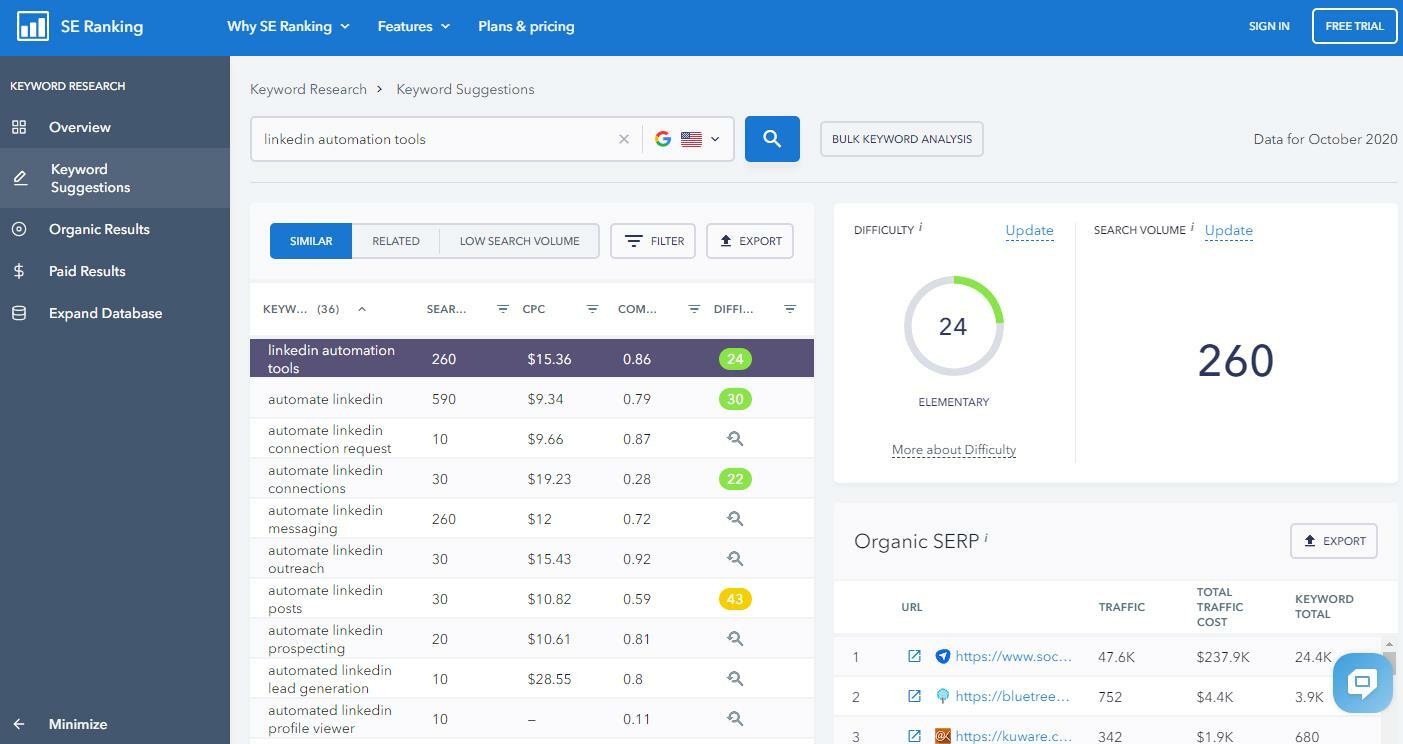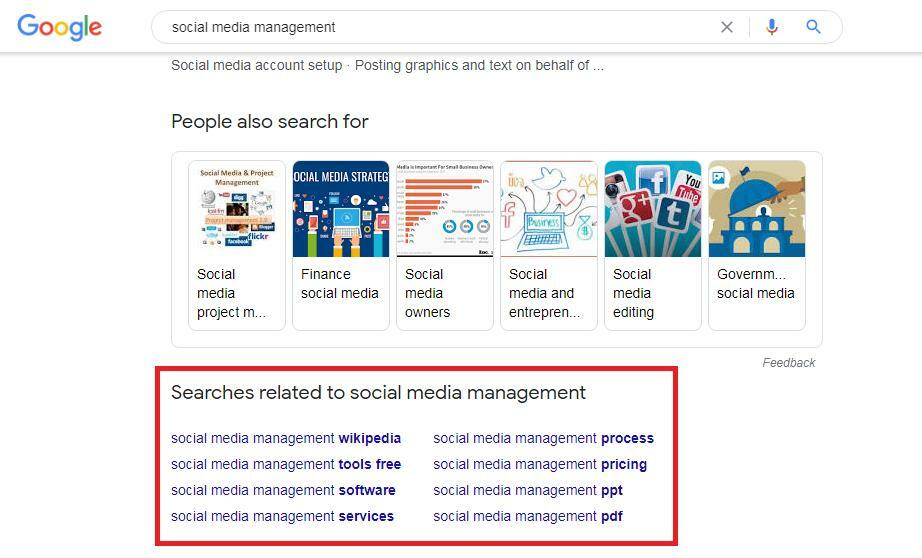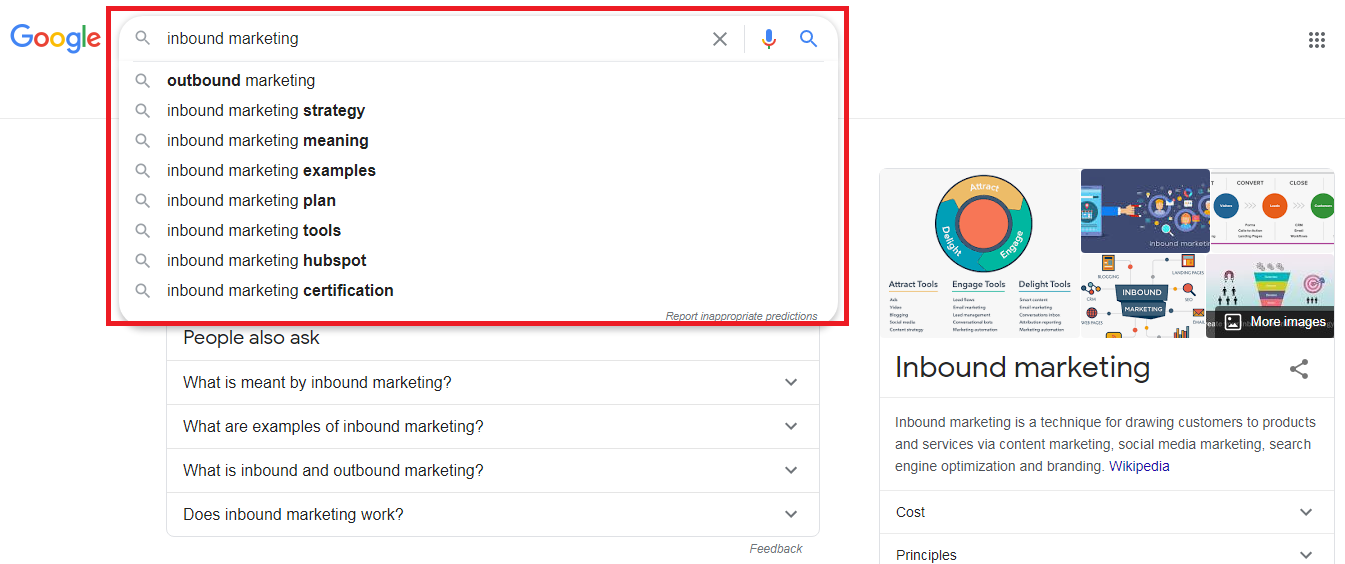Want to grow your business without increasing your budget for marketing? Then leverage the power of SEO-friendly Content.
However, creating SEO friendly content often requires time and effort. But, the benefits are worth it- if you do it right, SEO-friendly content will pay off in the long run.
Many people have the misconception that SEO-friendly content can’t be user-friendly. In fact, well-optimized, high-quality content essentially improves your chances of ranking higher in search results that attract more search users towards your content.
In order to help you, in this article, I’ve provided the answers for these below three questions:
- What is “SEO-friendly content”?
- What types of SEO-friendly content are there?
- How to Create SEO-Friendly Content?
Let’s get started!
1. What is “SEO-friendly content”?
Let’s break down the phrase to understand what SEO-friendly content is.
- SEO stands for search engine optimization aka the process of optimizing a website, webpage, or content for search engines like Google so that people can easily find them on search results when they search for a similar website, webpage, or content.
- Content refers to any information that lives on the web and can be consumed on the web
So, SEO-friendly content is any content created in such a way that it helps to attract search engine traffic.
SEO-friendly content brings unquestionable benefits to your websites like organic traffic and audience growth. Also, SEO content can be cheaper, more enduring, and sometimes more effective than paid advertising.
2. What types of SEO-friendly content are there?
The following are the types of SEO-friendly content that will boost your organic search traffic, conversions, and revenue.
- Blog Posts –Blog posts are the effective and easiest ways to create a regular flow of SEO-friendly content. Generally, blog posts are more engaging and attract more links, so they can be a great way to build authority for your website.
- Articles –Most of the magazine or newspaper style websites usually publish articles like a news article, interview, and featured article. Besides, these articles drive traffic to those websites.
- Infographics –Infographics contain a lot of data on a single subject which can generate more page views and links. However Infographics have so much content embedded in one large image, therefore the Infographics are not readable as text by search engines, so it’s necessary to optimize the rest of your webpage for SEO.
- Directories –Directories are a useful way to gain links to websites or resources around a given topic. For example, an herbal tea blog might create a directory of places to buy that particular herbal tea, from the main department stores to individual shops around the nation.
- Lists –Actually the list is a kind of article, but we’re framing it as a list like “Top 10 Powerful LinkedIn Automation Tools” or “60+ SureFire ECommerce Statistics” which makes list articles easier to scan. These types of list titles seem to be more clickable when found in social media feeds or search results.
- Guides –A guide is a longer piece of content that explains how to do something in detail. You can post an entire guide on your website or you can post an excerpt or summary and ask your visitors to fill out a registration form in order to read the complete guide. Putting up a registration form is a good way to generate leads but at the same time, most likely it will reduce the number of SEO traffic you can generate to that guide.
- Videos –It can be easier to rank on the first page for a competitive keyword with a video than an article. Therefore, video is a great way to attract and reach more audiences, but the results depend on what type of business or website you’re running. So, consider creating videos on your business process or tutorial videos for how to use your products, besides, don’t forget to add a text transcript of your videos.
- Product Pages –A good product page can serve as both SEO content and a PPC landing page for any retail or eCommerce website which gives both traffic and leads for the business sites.
The eight types of SEO-friendly content that I’ve listed above are proven to bring a lot of organic traffic. But don’t let this list limit your possibilities. There endless choices on the web to create SEO-friendly content.
Now, let’s look into the strategies to create SEO-friendly content!
3. How to Create SEO-Friendly Content?
If you have been creating content in a random manner, and hoping that some of your content eventually rank up on search results, it’s time to roll up your sleeves and commit to a more systematic SEO content strategy for the web.
Here are the nine steps to define and refine your SEO content strategy:
1) Begin with Keyword Research
While present SEO encouraging content makers to create thought-leadership types of content, Keywords still play a vital role. Finding the right keywords will help you to both satisfy your target audience and rule the search results.
While choosing your target keywords, consider the following factors:
- Understand your search intent behind the keywords you want to use in your content
- Research more resources to create content that competes with the content already shown up in the search results.
- The volume of searches for a particular keyword in a given time frame, because using the wrong keywords will lead to a waste of your time and efforts.
- Focus on long-tail keywords even though they might have a low search volume, they still give a high possibility to rank on the SERPs. As people often use longer phrases when they want to find out more specific information about a particular search topic.
Google suggests that you need to “think about the words and phrases that a user might search for to find a piece of your content.” For an article, you’d need to start your research with the right keyword. And for that particular article, you’d need to pick one primary keyword and up to 5-10 additional target keywords.
Select a Primary Keyword
When you’re writing a blog or an article, it’s obvious to feel the temptation to add as many keywords as possible and optimize your content for all those keywords. But, this practice will make your content less comprehensive.
Therefore it’s advisable to choose one primary keyword and dig deeper with it. Your primary keyword should be the main focus of your entire content.
Use Additional Keywords
Additional keywords should be closely related to your primary keyword so that including them in the content doesn’t change the main focus of the content. You can use free tools like LSIGraph to generate semantic, long-tail, and LSI keywords that are related to your primary keyword.

Below I’ve listed down some great ways to let you perform exceptional keyword research for your SEO friendly content:
1) Use keyword research tools like Google Keyword Planner, SE Ranking Keyword Suggestion tool or AnswerThePublic.

2) Use Google’s Related Searches to learn more about your target audience and what their search intent is

3) Google Autocompletewill provides keyword suggestions based on real user queries that help you to select the keywords just the way people do the search.

4) Wikipedia is a high ranking and authoritative online resource made by humans that people trust, refer to, and use. You can search for topic-specific pages on Wikipedia to find the most related keywords.
5) Use Quorato to find new variations of your target keywords, as many people use Quora to discuss numerous topics that aren’t filtered by search.

6) Check out different Industry Forums in your niche to see what types of topics and questions your target audiences are interested in.
7) Watch out for your main competitors and find out which keywords are driving quality traffic to their websites.
Once you find out your primary keyword and other related target keywords, make sure to add them in the right places in your content, like in your content:
- Title
- URL
- Meta description
- H1-H6 heading tags
- Image names and alt tags
Remember, over-using keywords will hamper your content readability, so avoid keyword stuffing and include your keywords throughout the content in a natural way.
Most importantly, create different types of content that answer questions or solve the problems of your target audience.
2) Define Your Search Intent and Identify the Format
Search intent is the why behind a search query means search intent is what users are trying to attain, and what they expect to get when typing or voicing a search query. Google pays a lot of consideration to educate its algorithms to evaluate users’ search intent correctly and encourages content makers to answer the search queries with relevant content.
Based on the search intent for a keyword, your content format, the message you convey in your content and the call to action you choose will vary. There are four types of search intent that we can categorize:
- Informational –Searchers looking for specific information
- Commercial –Searchers looking to purchase something or want to explore their options
- Transactional –Searchers want to buy something
- Navigational –Searchers looking for a specific website or webpage.
Here are some hints for keywords that you can use for the above-mentioned search intent types:
- Informational –Question words like “how”, “what”, guide, tutorial, or list words like “top”, “checklist”, “best” in the title.
- Commercial –Product modifying words like “review”, “cheapest”, “affordable” or “comparison”
- Transactional –Words like “buy”, “discount”, “and price “, ” coupon”
- Navigational –Names of product, brand, or service.
These hint words help you to determine the keywords for the specific search intent.
You can also use Google SERP features like featured snippets, People Also Ask, Google Ads, and Google Shopping ads to determine the keywords for the search intent.
According to the search intent and keywords, now you can identify the best format for your content.
3) Generate Well-Optimized Meta Title
The Meta title tag is an HTML code element that specifies the title of a webpage. Meta title tags showed on SERPs as the clickable headline for given search results. Therefore, the Meta title tag is one of the most important parts of both SEO and search user experience. That’s why it’s essential to create a well-optimized Meta title tag. Let see what are elements you need to focus on while optimizing your Meta title tag.
Primary keywords First – Primary keywords closer to the beginning of your Meta title tag may have more impact on search rankings. Ensure to always begin your title with your primary keywords to emphasize their relevancy and importance.
Meta Title Length – If your Meta title is longer than 50-60 characters, search engines may shorten it and could end up omitting important words from your title. Also, avoid writing your title in ALL CAPS LETTERS, they may be tough for search users to read, and may rigorously limit the number of characters search engines will show on the SERP results.
Write For Your Customers – SEO-wise, Meta title tags are very important but don’t forget that your first job is to attract clicks from your well-targeted search users who are likely to find your content valuable. So, it’s important to think about the user experience when you’re creating your Meta title tags. Along with keyword usage and Meta title tag optimization, also, you need to focus on the attractiveness of your Meta title tag. Because the Meta title tag is a new visitor’s first impression and interaction with your content when they find it in a search result. Hence, it should convey the most positive and valuable message possible.
4) Write Catchy H1 Title
H1 title is an HTML heading tag that plays an important role in structuring your content. H1 Heading tag gives both the website visitors and the search engines a clue about the content’s hierarchy and relevancy. Besides, including keywords in the H1 heading tag can help you to boost your search rankings.
Practically, your web content has two titles: the Meta title tag presented in your search snippet, and then the H1 heading tag which is displayed on the page itself that defines a page’s main content. H1 heading tag should be highly related to the content and unique across your website, and a page may only contain one H1 heading. Besides, don’t add the H1 heading tag in the image, since search engines don’t recognize images very well, you’d be missing out on an opportunity to signal to search engines what your content is about.
5) Create a Perfectly Optimized Meta Description
The Meta description is a snippet of short text up to about 155 characters that summarize the content. So it is important to optimize it appealing and informative to encourage search users to click your content.
There is no direct ranking benefit from the Meta description, but, Meta description impacts your click-through rate (CTR). If more people click on your web link, Google considers your content to be a good result, and based on your present ranking position, it will move up your rankings. That’s why optimizing the Meta description is so crucial, as is optimizing your title tags.
6) Structure Your Content for Readability
For instance, imagine you’re opening one of the search results on Google and there you found one continuous piece of plain text. Would you continue your reading? Definitely not, right? That’s why it’s essential to have a good structure for your high-quality content.
Adding subheadings will make your content scannable and increase its readability. With H2+H3 heading tags you can boost your content performance in terms of likes, shares, backlinks and traffic. You can structure your content and improve its readability by breaking your content into paragraphs, adding visual images, videos, tables, charts, etc, and including H2 and H3 heading tags. Plus, you can use, highlights, bullets, and numbered lists to enhance your content structure and readability.
Always, make sure to optimize your content before publishing it. While optimizing your content ensure that it is written in an SEO-friendly style, has a consistent tone throughout the content, and has unique text. Also, add recommended keywords and optimize the content length and reading time.
7) Enhance Your Content with Visuals
According to research, people remember only 10% of the information they hear, but they remember up to 65% of the information when they see it visually. So, using visuals in your content make it more memorable for your audience and increases the chances of content shares.
Adding multiple visual media like images, videos, gifs, and infographics can enhance your content’s SEO benefits, keep your users engaged, and gives search engines a strong cue that it’s high-quality content. Also, this will make your content SEO-friendly and eligible for image search. Consider the following factors while adding visuals to your content.
Alt Tags Attributes – Alt tags are HTML codes that describe your image and amplify the context of your content. Even though they are not visible on the page, search engines can read them to better understand the images in your content.
Compress Media Files – Use standard image sizes/formats and compress your images before uploading them to your content. Compressing your image files will have a positive effect on loading speed and enhance the overall user experience.
Use Descriptive Names – Google does recommend keeping descriptive filenames for your images, it will enhance your content quality. Filenames should probably be a short version of your alt tags.
8) Create SEO-Friendly URLs
Both your website visitors and search engines prefer well-structured and consistent URLs. So, it’s a good idea to stick with them. Here are the steps to create optimized SEO-friendly URLs before you hit publish your content.
Use Keyword in URL – Include the primary keyword in your URL, as a keyword-rich URL can improve your URL’s click-through rates (CTR) in search results. Also, URLs are a part of your snippet, so having a keyword on your URL makes them more relevant and generates more clicks for your content.
Avoid Special Characters – Special characters and symbols can cause unwanted troubles in your URLs, they can cause your URL links to break and make them hard to read. So, avoid using special characters and symbols while writing your URLs.
Avoid Unnecessary Words – Short URLs are better because URLs that are over 50-60 characters long will be shortened in SERP. Thus, long URLs can impact user experience, also shorter URLs are easier to share on social media. So keep your URL length to less than 100 characters and cut out unnecessary words around the keyword to give more clarity.
Avoid Stop Words and Automated Numeric Labels – Search engines often filter or ignore Stop Words like “and”, “but”, etc. Therefore, cut down on stop words to make your URLs shorter and more readable. Some CMS platforms automatically generate URLs that include numeric and awkward labeling, which can give a messy or confusing look to your URLs. So, avoid these numeric labels to make cleaner-looking URLs that your readers will understand and recognize.
9) Optimize Your Internal Linking
Internal Links are hyperlinks that go from one page on a website to a different page on the same website. Internal links are most helpful for building website architecture and spreading link equity across the website’s content. Also, internal linking passes authority from popular content to less popular content.
As you create new content, you should link to other relevant content, this way you can make your visitors stay longer on your website, and in return, they will gather more information from your website content. Adding a recommendation system is the automatic way to suggests content that is related to the one currently viewed. Plus, you can add internal links within your main content through various “read more” and “click here” suggestions. Internal linking also helps search engines to regularly discover contextually relevant content on your website.
Conclusion
Here you have it! As I mentioned above, sure, it’ll take lots of time and effort to create SEO-Friendly content. But, in the long run, it will be extremely beneficial. The above checklist of nine SEO content strategies will help you to make SEO-friendly content that ensures more shares, likes, leads, links, and repeat visitors for your content.
I’ve used these SEO content strategies to increase my blog’s traffic. So, I assured you that you will generate more traffic, improve your brand with these SEO content strategies.
If you’re not leveraging SEO-friendly content to improve organic rankings and captivate your target audience, I highly recommend that now is the best time to begin.
Do you have any other tactics to maximize the SEO friendliness of content? Or if you have any questions about creating and optimizing content for SEO, please, let me know them in the comments.
